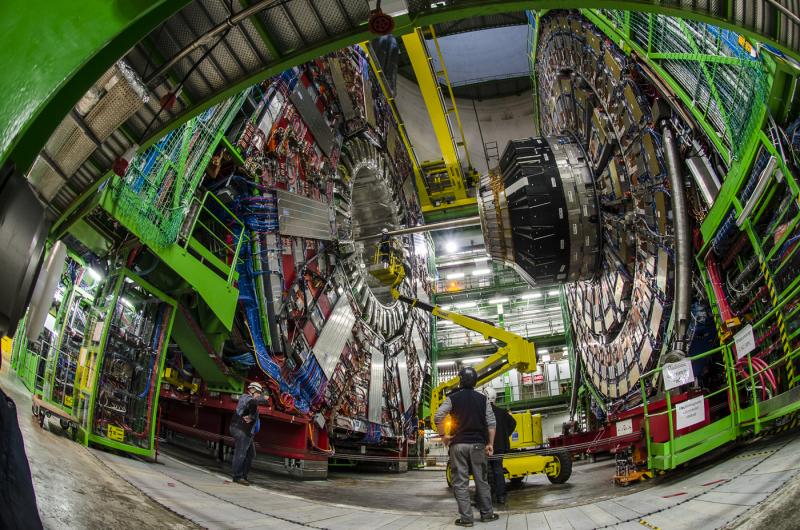Having successfully performed a Magnet Test in mid-November where the CMS magnet was run at the full operating field of 3.8 tesla, the focus in the CMS underground experimental cavern has transitioned to full activity to re-open the detector.
The present goal is to open CMS in order to insert the Pixel Tracker, the 66-million-channel device used to pinpoint the vertex of each colliding proton pair, located at the heart of the detector. The geometry of CMS is a cylinder lying on its side (22 meters long and 15 meters high in diameter), and it is sliced into 15 sections. For this movement, six of the slices (i.e., the three on each end) have to be pulled apart and slid along the length of the beampipe to the end walls of the hall. Sounds simple enough, but don’t forget that CMS weighs 14,000 tonnes!
For the first week it appears that nothing is happening: remove the parts that were placed for the Magnet Tests as precautions, prepare the forward regions, remove the forward calorimetry, open the shielding… Then the cable hoists are hooked up, the air pads are blown up, the grease is laid down, and the cables start pulling. A stroke of engineering inventiveness at the beginning of LS1 was to lay down a guiding rail to keep the movement on-track.
Pretty impressive to see something that weighs on the order of 1000 tons moving with such precision! Last week, one side of CMS was in the in the open configuration to accommodate the Pixel Tracker; the second side will be ready this week.
The views expressed in CMS blogs are personal views of the author and do not necessarily represent official views of the CMS collaboration.

